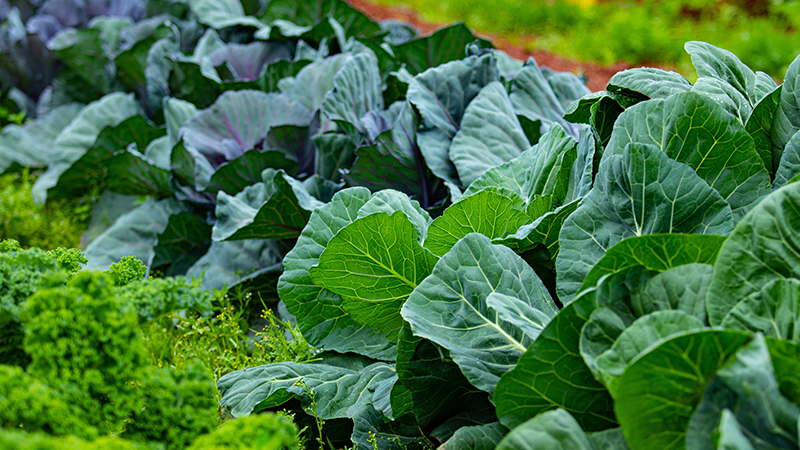Precision Technology Makes Semiochemicals More Effective
 Whether you’re a veteran of using semiochemicals and other biocontrols or you’ve just gotten started, it’s likely you are looking for ways to be as effective as possible with your crop protection solutions, and ultimately get the best value for your dollar.
Whether you’re a veteran of using semiochemicals and other biocontrols or you’ve just gotten started, it’s likely you are looking for ways to be as effective as possible with your crop protection solutions, and ultimately get the best value for your dollar.
The precision technology tools highlighted at the 2018 Biocontrols USA West Conference & Expo in San Diego, CA, aim to ensure that your biocontrols will be efficiently applied for the best possible coverage and efficacy.
Semiochemicals Offer a Range of Control Options
In his presentation, Delivery of Semiochemicals for Pest Management: Dispensers, Sprays, and the Future, Bradley Higbee of Trécé Inc., provided details on how tree fruit growers and vegetable growers could safely and effectively apply controls that interrupt insects’ natural biological processes.
Semiochemicals are natural chemicals released by an organism that send signals and affect the behaviors of others. They are used as crop protection agents to confuse and re-route insect pests, with pheromones for intraspecific interactions, and allelochemicals for interspecific interactions. Semiochemicals are currently used for mating disruption with moth pests, trail-following disruption for ants, repellents, attract-and-kill for fruit flies, and mass trapping for invasive species. Higbee says mass trapping has been highly effective in controlling small, low-density, isolated populations.
Broad Range of Dispersal Methods Available
Precision Tools developed to disseminate semiochemicals include:
Solid Dispensers. Pheromone delivery has traditionally been executed with solid and reservoir dispensers like puzzle pieces, mesos, pouches, ropes, twist ties, and ampules. These are typically applied for 20 to 400 acres in tree crops, and have temperature-dependent release rates and longevity, though longevity can be flexible based on loading rate, and season-long control is typical, Higbee says. Some of these products are organically acceptable. Many offer multi-species control, but they tend to need to be hand-applied.
Matrix Diffusion System (SPLAT). This is a wax emulsion product that is dispersed in dollops, the size and pheromone concentration of which can be controlled, Higbee says. The product offers several delivery options —by hand, by grease or paintball gun, and even by drone. It can be applied at a rate of 80 to in the thousands of pheromones per acre and has a 4- to 6-week longevity. Some products are acceptable for organic production.
Fibers and Flakes. With the ability to deliver hundreds to thousands of pheromones per acre, fiber products come in a plastic laminate formulation with pheromones sandwiched between two outer layers of PVC plastic, which is then chopped into small flakes, mixed in a chamber with stickers, and dispersed through specialized equipment for aerial or ground applications.
Deposits of plastic semiochemical-infused flakes are attached to plant foliage, where pheromones are slowly released through the edges of the small flakes over a period of several weeks.
Aerosol Puffers. Pressurized canisters containing pheromones, a carrier or dilutent, and a propellent are programmable to varying degrees, and also offer varying degrees of precision and efficiency. They can be operated with remote communications, and thus, can couple with other data collection devices. Higbee says puffers typically have low-density application rates, needing one or two per acre, but season-long loading and release is typical for a canister. Mechanical malfunctions can happen; however, the units typically have a 1- to 5-year lifespan.
Liquids. Higbee says liquid semiochemical formulations are something that growers can really embrace because they can put the liquids in spray tanks like other crop protection agents, allowing for precision use and augmentation, and provide great flexibility in timing and application. The downside of sprayables, however, is that they only last two to five weeks, however newer chemistries coming on the market will last closer to five weeks, Higbee says.
Which Delivery Method Is Best?
Growers should choose the application method best suited for the biology of the pest they’re trying to control, and the duration of protection that’s required, Higbee says. Product and implementation costs are other important factors to consider.
Factors that determine release and efficiency for most of these methods (but not including aerosol dispensers) typically include climate, especially temperatures, and release rate kinetics, which are determined by the type of molecule, dispenser, and climatic conditions.
Overall, Higbee says the warmer it is, the more pheromones are released (again, with the exception of delivery by aerosol dispensers), and insects are naturally more active when it’s warmer, so semiochemicals tend to work well with insect biology.
The Future of Semiochemical Delivery Methods
With rapid development in biocontrols, the future could include a number of different delivery systems to dispense semiochemicals, from permanent delivery systems like drip irrigation to drones, to nanotechnology, to formulation advances, and even molecular technology, Higbee says.
The use of drones may not “take flight” for the delivery of semiochemicals, Higbee says, because they have to be flown within eyesight and close enough to the crop to provide adequate coverage. Time will tell on this delivery method, he says.
Super Puffers could provide better coverage for aerosols, through the use of wind turbines, though this is currently somewhat conceptual.
The real future, Higbee says, is in molecular biology with techniques in development for directed evolution that mimics natural selection. Genetically engineered plants may offer more targeted control. Advances like the Sexy Plant, developed by a team of students and researchers through an international “genetically engineered machine” competition through the iGEM Foundation, could yield significant breakthroughs as mating disruption through pheromones are bred into plant biology.
For more information on biological control methods and how you can apply them successfully in your production, make plans now to attend the upcoming Biocontrols USA East Conference & Expo.










